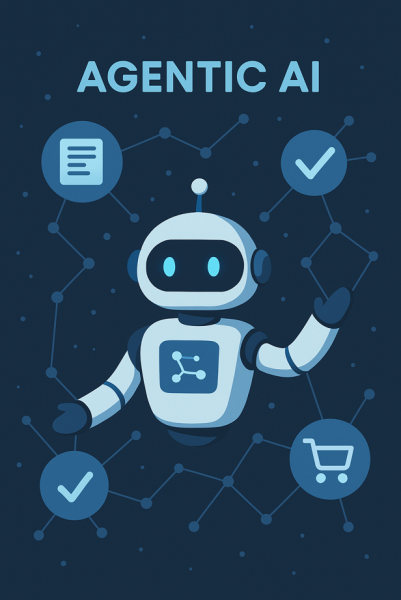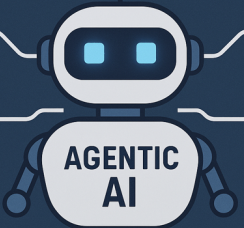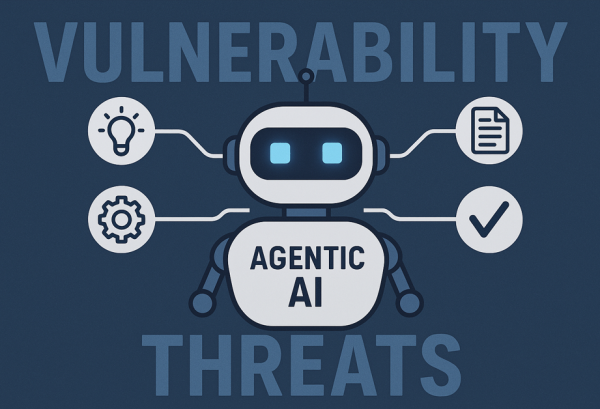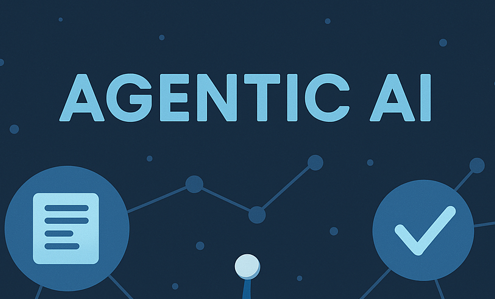In 2025, Cyber Security threats have increased much more , lets learn.
So What is Agentic AI , lets know more here-
Agentic AI refers to artificial intelligence systems that can autonomously plan, make decisions, and take actions to achieve specific goals without constant human intervention. Unlike traditional AI, which mainly provides responses to prompts or recommendations, agentic AI is designed to operate proactively by analyzing data, strategizing solutions, and executing actions based on its objectives.

Key Features of Agentic AI:
Autonomous Decision-Making – It can assess situations and make independent choices.
Goal-Directed Behavior – It works towards achieving specific objectives rather than just providing outputs.
Context Awareness – It adapts to new data and changing environments.
Task Execution – It can initiate and complete tasks without human input.
Self-Improvement – Some agentic AI models continuously learn and refine their decision-making processes.
Examples of Agentic AI:
Cybersecurity AI Agents: Automated security bots that detect and neutralize cyber threats in real time.
AI-Powered Personal Assistants: Digital assistants that proactively manage schedules, make purchases, or automate workflows.
Autonomous Trading Bots: AI agents that analyze financial markets and make trading decisions without human intervention.
Self-Healing IT Systems: AI-driven IT infrastructure that can diagnose and fix issues on its own.

Risks of Agentic AI:
1. Autonomous AI-Driven Attacks
Cybercriminals are leveraging agentic AI to conduct sophisticated, automated attacks. These AI systems can independently identify vulnerabilities, develop tailored exploits, and adapt strategies in real-time, increasing the efficiency and scale of cyberattacks. This evolution enables even less experienced hackers to execute complex operations, amplifying the overall threat landscape.
2. Exploitation of AI Vulnerabilities
The integration of agentic AI into critical systems introduces potential vulnerabilities that adversaries may exploit. For instance, AI models can be susceptible to prompt injection attacks, where malicious inputs cause unintended behaviors. Addressing these risks requires robust security measures and continuous monitoring to prevent data breaches and system compromises.
3. Overreliance on Autonomous Systems
Dependence on agentic AI for cybersecurity tasks may lead to complacency among human operators. Overreliance on these systems can result in overlooked anomalies and delayed responses to novel threats that fall outside the AI’s training. Maintaining a balanced approach that combines AI capabilities with human oversight is essential to mitigate this risk.
4. Privacy Concerns and Data Exposure
Agentic AI systems often require access to extensive datasets to function effectively. This necessity raises concerns about user privacy and the potential for unauthorized data exposure. Ensuring that AI agents operate within strict data governance frameworks and implementing measures to protect sensitive information are critical to maintaining user trust.

5. Emergence of AI-Enhanced Social Engineering
The use of agentic AI enables the creation of highly personalized and convincing phishing campaigns. By analyzing vast amounts of personal data, AI can craft messages that closely mimic legitimate communications, making it challenging for individuals to discern fraudulent attempts. Enhanced awareness and advanced detection tools are necessary to combat these sophisticated social engineering tactics.
6. Loss of Control
Highly autonomous AI systems might act in unintended ways, making them difficult to oversee.
7. Arms Race Between Offensive and Defensive AI
As both malicious actors and cybersecurity professionals adopt agentic AI, a technological arms race is underway. Attackers continually develop more advanced AI-driven techniques, while defenders strive to create AI systems capable of predicting, detecting, and neutralizing these threats. This dynamic necessitates ongoing investment in AI research and adaptive security strategies to stay ahead of emerging risks.
To navigate the challenges posed by agentic AI in cybersecurity, organizations must implement comprehensive strategies that include continuous monitoring, regular system audits, robust data protection measures, and the integration of AI with human expertise. Proactive adaptation to this evolving landscape is essential to safeguard against the multifaceted threats emerging in 2025.





